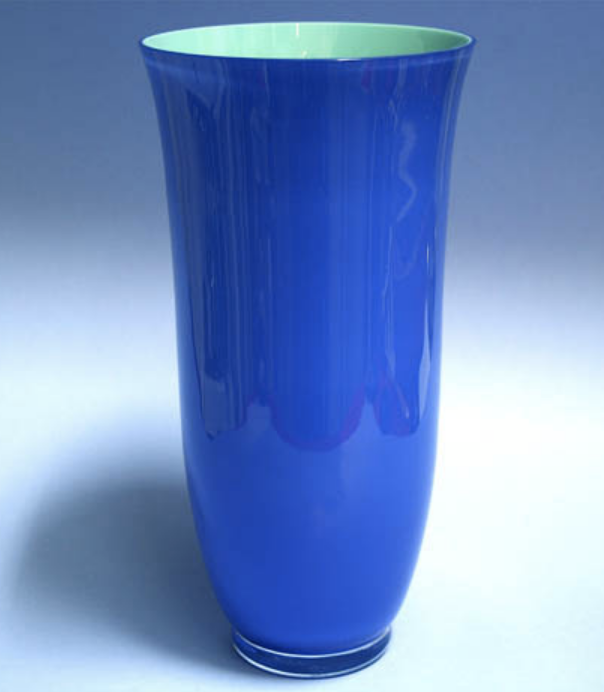

Title: 20th Century Venetian Art Glass, Hand Blown tall blue vase
Shipping: $29.00
Artist:
Period: Unassigned
History: Art
Origin: Southern Europe > Italy
Condition: Excellent
Item Date: N/A
Item ID: 909
20th Century Venetian Art Glass – Hand-Blown Tall Blue Vase. Italian art glass from Venice, Italy, 20th century. This exquisite colored glass piece features a rich blue exterior with a lighter blue interior and is hand-signed by the artist. Originally created for Tiffany & Co., this vase is a stunning example of Venetian craftsmanship. Photographs cannot capture its full beauty—this remarkable piece of art glass captivates the viewer, showcasing the mastery of a true 20th-century glass artist. The history of Venetian art glass is a story of innovation, craftsmanship, and artistic mastery that spans centuries. Originating on the island of Murano, near Venice, Italian artisans began developing unique glassmaking techniques as early as the 13th century, transforming ordinary glass into extraordinary works of art. Through meticulous experimentation with color, texture, and form, Murano glassmakers created delicate and intricate pieces that became highly prized across Europe. Innovations such as crystalline glass, enamel decoration, and aventurine (gold-flecked glass) established Venice as the epicenter of luxury glass art. By the 20th century, Venetian art glass evolved further, blending traditional methods with modern design sensibilities, resulting in collectible masterpieces that continue to captivate connoisseurs worldwide.
Venetian glass became highly valuable due to a combination of technical mastery, artistic innovation, and exclusivity. Murano artisans developed techniques that were unmatched elsewhere in Europe, including crystalline clarity, intricate filigree, enamel decoration, and the use of gold and other precious materials within the glass. Each piece required immense skill, often taking weeks to complete, making the objects both labor-intensive and unique. Additionally, Venice tightly controlled the glassmaking industry—craft secrets were closely guarded, and the island’s glassmakers were forbidden to leave, ensuring rarity and maintaining high demand. Over time, these factors—exceptional craftsmanship, artistic beauty, and scarcity—established Venetian glass as a luxury item coveted by collectors and aristocrats across the world.
Link: http://en.wikipedia.org/wiki/Venetian_glass
Muranos reputation as a center for glassmaking was born when the Venetian Republic, fearing fire and destruction to the citys mostly wood buildings, ordered glassmakers to move their foundries to Murano in 1291. Murano glass is still interwoven with Venetian glass. Murano's glassmakers were soon the islands most prominent citizens. By the 14th century, glass makers were allowed to wear swords, enjoyed immunity from prosecution by the Venetian state and found their daughters married into Venices most affluent families. Of course there was a catch: Glassmakers weren't allowed to leave the Republic. However, many craftsmen took this risk and set up glass furnaces in surrounding cities and as far afield as England and the Netherlands. Muranos glassmakers held a monopoly on quality glassmaking for centuries, developing or refining many technologies including crystalline glass, enameled glass (smalto), glass with threads of gold (aventurine), multicolored glass (millefiori), milk glass (lattimo), and imitation gemstones made of glass. Today, the artisans of Murano are still employing these century-old techniques, crafting everything from contemporary art glass and glass jewelry to murano glass chandeliers and wine stoppers.